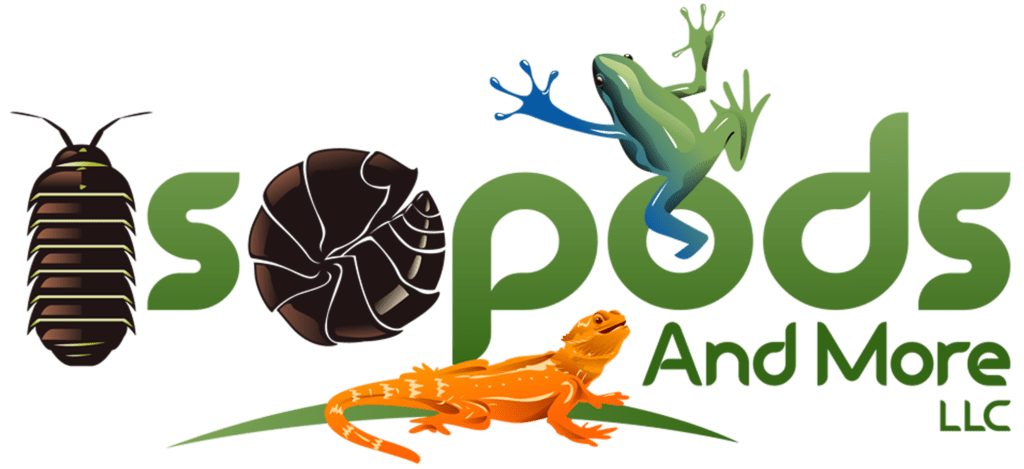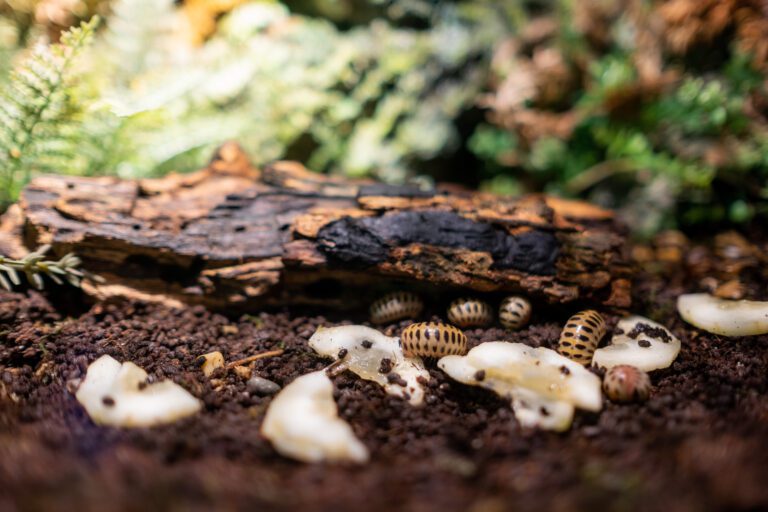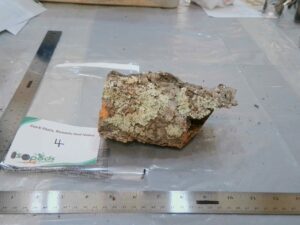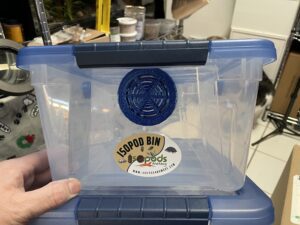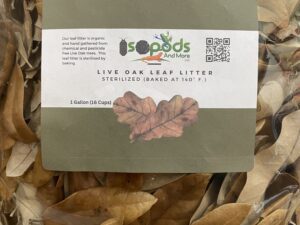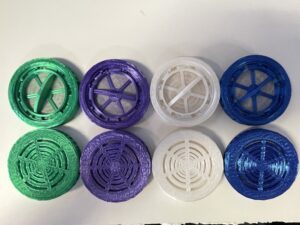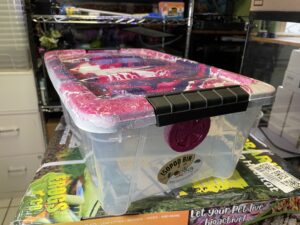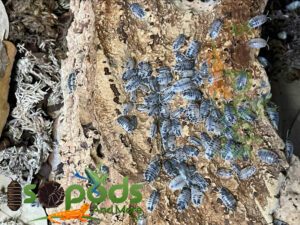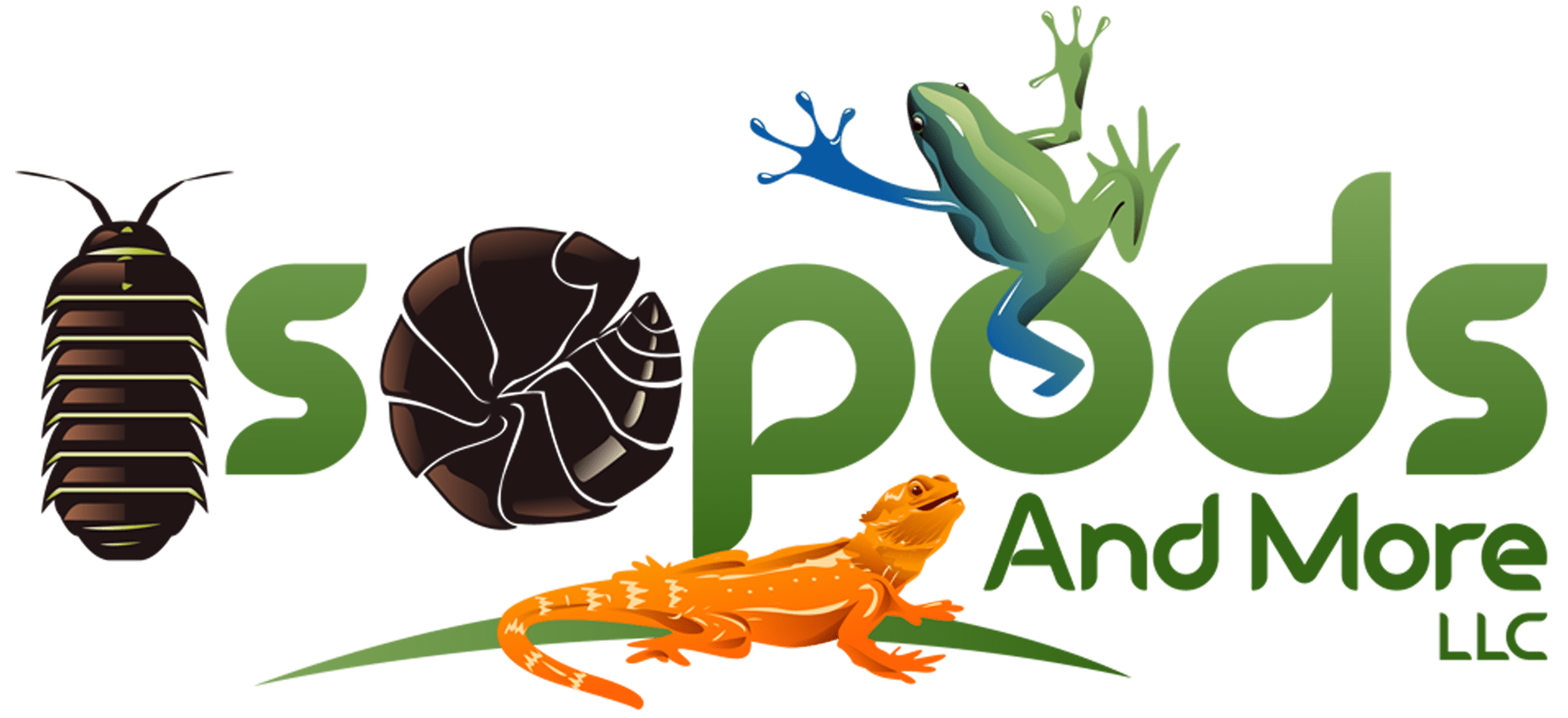Key Takeaways:
- Isopods are fascinating micropets that offer a unique and enchanting world to discover.
- Setting up a suitable habitat is crucial, requiring the right enclosure, substrate, decorations, and maintaining temperature and humidity levels.
- Proper care and maintenance involve handling them carefully, cleaning their habitat regularly, and addressing common health issues promptly.
The Fascinating World of Isopods
Dive into the captivating realm of isopods, tiny creatures that are intriguing micropets. Explore the “Isopod Basics” sub-section and uncover the wonders of these fascinating organisms. Discover their unique characteristics and learn about the secrets they hold within their tiny bodies. Brace yourself for a thrilling journey into the enchanting world of isopods that will leave you awe-inspired.
Isopod Basics
Isopods are fascinating creatures that belong to the crustacean family. Different types of isopods exist, each with their own characteristics and behaviors. Isopods display a distinct anatomy, such as segmented bodies, jointed limbs, and gills for breathing. When threatened, they can roll into a ball for protection. Isopods dwell in various habitats, such as forests or rainforests, usually in moist conditions. They are vital to the ecosystem as decomposers, helping break down organic matter. Furthermore, isopods display intricate mating rituals and reproductive cycles which contribute to their population growth.
By understanding isopod basics, people can create suitable environments to meet their needs and guarantee their well-being. Isopods are small, armored packages that contain a lot of goodness.
What are Isopods?
Isopods, captivating crustaceans, have diverse shapes, sizes, and colors. They roll up when threatened and inhabit forests, deserts, and water. Isopods thrive in moist areas, recycle nutrients, and aid research. They make low-maintenance pets with entertaining behavior. This guide covers isopod species, habitat setup, and care. Isopods are fascinating creatures that bring joy to enthusiasts.
Different Types of Isopods
Isopods come in a variety of shapes, sizes, colors, and habitats. Fascinating to observe, we can categorize them based on these traits.
| Common Name | Scientific Name | Size Range | Coloration | Preferred Habitat |
|---|---|---|---|---|
| Dwarf White Isopod | Trichorhina tomentosa | 2-5 mm | White to off-white | Moist substrate, leaf litter |
| Powder Blue Isopod | Porcellionides pruinosus | 10-15 mm | Powder blue with white spots | Moist substrate, rotting wood |
| Giant Canyon Isopod | Armadillidium vulgare | 15-18 mm | Dark gray to black | Moist soil, leaf litter |
| Spanish Orange Isopod | Porcellio scaber | 10-15 mm | Orange-brown with dark markings | Moist substrate, decaying plant matter |
| Tricolor Isopod | Armadillidium maculatum | 12-15 mm | Yellow, gray, and black | Moist substrate, leaf litter |
| Rubber Ducky Isopod | Porcellio laevis | 8-12 mm | Bright yellow | Moist substrate, rotting wood |
| Orange Vigor Isopod | Porcellio dilatatus | 8-12 mm | Orange-brown | Moist substrate, leaf litter |
| Zebra Isopod | Armadillidium nasatum | 8-12 mm | Black with white stripes | Moist soil, rotting wood |
| Cheesecake Isopod | Armadillidium klugii | 12-15 mm | White with yellow spots | Moist substrate, decaying plant matter |
| Dalmatian Isopod | Porcellio scaber “Dalmatian” | 10-15 mm | White with black spots | Moist substrate, leaf litter |
But there’s more! Isopods possess unique adaptations that let them thrive in certain environments. Plus, some species have special physical features or behaviors that make them stand out from the crowd. By exploring these unique details, we can gain a deeper appreciation for the diversity of isopods!
Isopod Anatomy and Behavior
Isopods, also known as micropets, are small crustaceans that can be fascinating to observe and care for. Knowing their anatomy and behavior is key for providing proper care and creating the ideal habitat.
To comprehend their anatomy and behavior, it is helpful to imagine their physical features and how they interact with their surroundings. The table below gives a quick overview:
| Isopod Anatomy | Isopod Behavior |
|---|---|
| – Segmented body with a hard exoskeleton – Two pairs of antennae – Seven pairs of legs – Gills for respiration |
– Terrestrial or aquatic habitats – Feed on decaying organic matter – Exhibit social behaviors such as aggregation – Capable of rolling into a defensive ball |
Aside from their physical features, isopods show interesting behaviors that add to their uniqueness. They live in various ecosystems, like leaf litter, soils, forests, and underwater. As decomposers, they assist in nutrient cycling by breaking down organic matter and contributing to decomposition.
Understanding their anatomy and behavior helps pet owners or enthusiasts provide suitable habitats for these creatures, while appreciating their ecological importance. Setting up a home for your isopods is like building a luxurious hotel for tiny adventurers.

Setting up an Isopod Habitat
Setting up an isopod habitat is crucial for their well-being. Discover how to create the perfect environment by choosing the right enclosure, substrate, and decorations. Learn about the temperature and humidity requirements to ensure their comfort. And don’t forget the essential aspect of providing adequate food and water. Get ready to dive into the enchanting world of isopods and become a pro at keeping these fascinating micropets!
Choosing the Right Enclosure
When it comes to giving isopods a home, selecting the right enclosure is very important. It should resemble their natural environment and fulfil their specific needs for space, ventilation, and substrate.
To make sure your isopod’s habitat is perfect, there are several factors to think of. Look at the size – different species have different space requirements. Then, make sure there is enough air circulation. Finally, pick a material which keeps the environment moist.
Plus, there are other details to consider when choosing an isopod enclosure. Some may need hiding spots or climbing structures. To make sure your isopod is happy, research what they need. Isopods want a stylish home – get creative with substrate and decorations!
Substrate and Decorations
Isopods need a certain type of substrate to stay healthy and reproduce. A mix of materials such as leaf litter, coconut fiber, and sphagnum moss supply the necessary moisture and nutrients for them. These substrates keep moisture and also allow for proper drainage to stop waterlogging.
Adding decorations like rocks, branches, and hides not only looks nice, but also makes a natural environment similar to their natural homes. By giving a variety of sizes and types of decorations, isopod owners can meet the needs of different isopod species. This lets isopods act naturally and feel secure.
Including live plants not only makes it look interesting, but also raises humidity levels. This is good as isopods need high humidity to be healthy. Checking substrate moisture levels and changing them as needed keeps the right humidity range.
To stop being bored and explore, it is important to change and replace decorations sometimes. This gives mental stimulation to isopods and stops them from being bored in their environment.
By selecting suitable substrates and adding the right decorations, isopod owners can make an exciting environment that looks like their natural habitats and keeps them happy.
Temperature and Humidity Requirements
Temperature and humidity are vital for isopods to stay healthy and happy. These tiny critters have special needs for their environment. Let’s check out the table below to learn more about the temperature and humidity requirements for isopods!
Table: Isopod Temperature and Humidity Requirements
| Isopod Species | Temperature Range | Humidity Range |
|---|---|---|
| Porcellio scaber | 18°C – 24°C | 50% – 80% |
| Armadillidium vulgare | 18°C – 24°C | 40% – 70% |
| Porcellionides pruinosus | 18°C – 24°C | 50% – 80% |
| Armadillidium maculatum | 18°C – 24°C | 40% – 70% |
| Porcellio laevis | 18°C – 24°C | 50% – 80% |
| Porcellio scaber ‘Dalmatian’ | 18°C – 24°C | 50% – 80% |
| Armadillidium klugii | 18°C – 24°C | 40% – 70% |
| Porcellionides pruinosus ‘Powder Blue’ | 18°C – 24°C | 50% – 80% |
| Armadillidium maculatum ‘Zebra’ | 18°C – 24°C | 40% – 70% |
| Trichorhina tomentosa | 20°C – 24°C | 60% – 80% |
The temperature and humidity needs of each isopod species may differ slightly. Research and understand the exact requirements of your isopod species to help them thrive.
Creating a microclimate in the enclosure can also replicate their natural habitat. Use heating or cooling devices, like heat mats or fans, to manage temperatures. Humidity can be managed by misting or using damp substrates.
By monitoring and adjusting temperature and humidity in their habitat, you can create the ideal living conditions for your isopods. This will keep them healthy and happy!
Feeding your isopods is like running a 24/7 buffet. No complaints about vegan options either!
Providing Food and Water
Providing proper food and water to isopods is essential for their well-being and thriving in their enclosure. Isopods are detritivores, meaning they primarily feed on decaying organic matter. To meet their dietary needs, you can offer a variety of food sources such as leaf litter, rotting wood, vegetable scraps, and even specialized isopod food available in the market. These food items should be rich in nutrients and free from pesticides or harmful chemicals. Additionally, it’s important to maintain a humid environment as isopods obtain a significant portion of their water from the surroundings. You can achieve this by misting the enclosure regularly or providing a moist substrate. It’s also beneficial to provide a shallow dish of clean water or use moisture-rich food items like fresh fruits or vegetables to ensure their hydration. Regularly monitoring and replenishing their food and water sources will help ensure the health and longevity of your isopods.

Isopod Care and Maintenance
Discover the secrets to caring for your isopods in our Isopod Care and Maintenance section. Learn how to handle and interact with these fascinating creatures, keep their habitats clean and well-maintained, and how to address common health issues they may encounter.
Handling and Interacting with Isopods
Interacting with isopods requires understanding their behavior and taking care of them. They are fragile creatures that must be handled with a soft brush or tweezers; no excessive pressure should be applied. Clean hands are essential for handling, and it’s important to avoid sudden movements as this can cause stress or injury.
| Handling Care Tips |
|---|
| 1. Handle isopods gently and avoid squeezing or dropping them. |
| 2. Wash your hands before and after handling isopods to prevent cross-contamination. |
| 3. Use clean, dry hands or wear disposable gloves to handle isopods. |
| 4. Avoid touching the gills or delicate body parts of isopods. |
| 5. Do not handle isopods if you have recently used chemicals or pesticides. |
| 6. Provide a gentle surface, such as a moist paper towel, for isopods to crawl on during handling. |
| 7. Avoid sudden movements or loud noises that may startle isopods. |
| 8. If an isopod falls or jumps off your hand, carefully pick it up and place it back in the enclosure. |
| 9. Limit handling sessions to short durations and avoid excessive handling to reduce stress on isopods. |
| 10. Observe isopods closely during handling to ensure they are active, healthy, and not showing signs of distress. |
To minimize stress, keep interactions brief and don’t overcrowd the enclosure. Observe their behavior during interactions for any signs of distress or health issues. Different species may have different needs in terms of handling and interaction, so research the particular species you have.
Prioritize isopods’ welfare by being gentle, cautious, and aware of their individual needs. Provide a calm environment and monitor their behavior closely for a positive experience. Lastly, clean their habitat so they can live comfortably.
Cleaning and Maintaining the Habitat
Clean and maintain the habitat of isopods – essential for their health! Choose the right enclosure: glass or plastic with secure lids. Take out debris regularly, wipe surfaces with mild disinfectant. Change substrate, adjust humidity & monitor for signs of illness.
Don’t disturb them excessively – noise, sudden temp changes or handling. This will keep their habitat clean and healthy, without causing stress or harm.
Common Health Issues and How to Address Them
Isopods need special care. Here are some common health issues they can face and how to help them:
| Health Issue | Help |
|---|---|
| Dehydration | Mist their enclosure and provide moist places for them to hide. Offer fresh fruits and veggies with high water content. |
| Poor Molting | Give them a substrate that’s good for digging and burrowing, and offer calcium-rich food like cuttlebone and eggshells. |
| Parasites and Diseases | Check for signs of mites or fungal infections. Isolate and treat any affected isopods. |
| Stress | Provide enough space, keep conditions consistent, handle them carefully, and keep stressors away. |
Be a great isopod owner! Monitor behavior, get advice from experienced isopod keepers, and vet advice. Then you can ensure your micropets stay healthy and happy!
Breeding and Raising Isopods
Breeding and raising isopods takes us into the fascinating realm of their reproduction cycle, successful breeding tips, and caring for the tiny isopod offspring. Delving into the world of these micropets, we will explore the intricate stages of their reproduction, provide valuable insights on how to ensure successful breeding, and offer practical advice for nurturing and caring for isopod offspring. Join us on this journey where we unravel the wonders of breeding and raising isopods.
Understanding the Isopod Reproduction Cycle
Isopod reproduction is intriguing. They have a unique system that allows for both sexual and asexual reproduction. Males transfer spermatophores to females during mating. Females then internally fertilize eggs and carry them in a marsupium until they hatch. Parthenogenesis is a type of asexual reproduction, allowing females to produce offspring without males.
It’s important to create a suitable environment for successful reproduction. By studying the process, enthusiasts gain insights into these captivating micro-pets. Did you know? Isopods have one of the highest reproductive rates.
Ready to be a matchmaker? Here are some tips for successful breeding!
| Tips for Successful Breeding of Isopods |
|---|
| 1. Provide a suitable habitat with the right temperature and humidity levels. |
| 2. Use a high-quality substrate that retains moisture and provides nutrition. |
| 3. Offer a variety of food sources, including fresh fruits, vegetables, and decaying organic matter. |
| 4. Ensure proper ventilation to prevent the buildup of excess moisture. |
| 5. Maintain clean conditions by removing any uneaten food or waste regularly. |
| 6. Create hiding spots and suitable shelter for the isopods to feel secure. |
| 7. Avoid overcrowding the enclosure, as it can lead to stress and competition for resources. |
| 8. Monitor and maintain appropriate temperature and humidity levels consistently. |
| 9. Provide a calcium source to support proper growth and molting. |
| 10. Observe and document the breeding behavior and reproductive cycles of your isopods. |
Tips for Successful Breeding
For a successful isopod breeding experience, there are important tips to keep in mind. These include providing the optimal environment, offering a balanced diet, providing suitable hiding places, and monitoring population size. Additionally, researching individual species’ needs can help create an ideal habitat for breeding.
The rare species Armadillidium magnificum is an example of a species whose breeding requirements are especially challenging. Nevertheless, those who have managed to breed this species successfully have provided invaluable insights into the isopod breeding process.

Caring for Isopod Offspring
Isopod offspring need special care to ensure their health and wellbeing. This includes giving them the right environment, food, and attention for their growth and progress.
- Have a good habitat: Set up a neat enclosure with ideal temperature and humidity, plus good hiding spots and substrate for the offspring to explore.
- Supply nourishing food: Give a variety of leaf litter, rotten wood, fruits, veg, and protein sources like fish flakes or shrimp pellets. Add calcium-rich meals to aid molting.
- Check the temp and humidity: Monitor conditions in the habitat with a thermometer and hygrometer. Isopod young flourish in consistent warmth and moisture.
- Observe behavior: Regularly watch the young’s behavior to make sure they’re active, eating well, and showing signs of healthy growth. Address any abnormalities quickly.
- Clean the habitat often: Take out any waste or leftover food from the enclosure to keep it clean and stop bacteria from growing. A tidy habitat boosts isopod offspring’s wellness.
- Get vet help if needed: If there are worries about the health or progress of isopod young, talk to an exotic pet vet for good advice and treatment options.
Plus, give isopod offspring enough room to grow without overcrowding or competing for resources. Each species may have unique demands regarding social dynamics and population density in an enclosure.
Throughout time, people who love isopods have honed their skills in caring for the creatures’ young. Their commitment has led to improvements in breeding techniques that encourage successful reproduction and healthy isopod generations. By studying patterns in reproduction cycles and adjusting the environment accordingly, enthusiasts have been able to raise flourishing isopod offspring for pet owners and researchers to enjoy.
Isopods as Micropets
Isopods as micropets offer a fascinating world to explore, with their unique characteristics and low-maintenance care. Discover the benefits of keeping isopods as pets, suitable species for beginners, and ways to enhance the isopod keeping experience. Get ready to embark on a journey into the enchanting microcosm of these captivating creatures.
Benefits of Keeping Isopods as Pets
Isopods make great pets! Low maintenance and time-friendly, these unique creatures offer many benefits. They help keep the environment clean, as they naturally recycle organic waste. Plus, they aid soil health and nutrient cycling by breaking down dead plant material and releasing nutrients back into the soil.
For those interested in nature, isopods can be educational and fascinating to observe. They can display remarkable characteristics such as changing color depending on their environment or mood. Some species also have evolved interesting defense mechanisms like rolling up into a ball or releasing defensive chemicals.
So why not keep isopods as pets? They offer an interesting and unique experience, plus they contribute to the overall well-being of their owners.
Suitable Isopod Species for Beginners
Isopods are amazing pets, perfect for beginner pet owners. They’re tiny and easy to take care of, needing minimal maintenance. If you’re a beginner, there are 3 great isopod species you can choose from.
Firstly, the Dwarf White Isopod (Trichorhina tomentosa) is a popular choice. They’re white and very hardy. They love humid environments and do well in small enclosures.
Second, the Powder Orange Isopod (Porcellio scaber ‘orange’) is another suitable option. They’re orange and can cope with a variety of conditions. They’re really good at eating organic matter too.
Finally, the Giant Canyon Isopod (Porcellio laevis) is larger and great for those who want a unique pet. Even though they’re big, they don’t need much looking after. Plus, they’re fascinating to watch!
Enhancing the Isopod Keeping Experience
Isopod keepers can have a more enjoyable experience with their micro pets by taking some simple steps. Such as utilizing suitable enclosures and substrate, providing a balanced diet and interacting with the isopods.
In addition, they can add a creative twist to their journey with custom designs or specialized products. It’s also fascinating to explore the history of isopod keeping. This has grown steadily over time and has led to a community of passionate isopod keepers.
Therefore, for maximum satisfaction and engagement, focus on habitat setup, nutrition, interaction and explore the unique options available within the hobby. This will enhance the overall isopod keeping experience.
Fun Facts and Interesting Isopod Species
Dive into the fascinating realm of isopods and uncover a treasure trove of fun facts and captivating isopod species. Prepare to encounter unusual isopod species that will leave you in awe, and explore their intricate roles in the natural world. Get ready to embark on an adventure of discovery as we delve into the enchanting world of isopods and unravel the wonders that these micropets have to offer.
Unusual Isopod Species to Discover
Isopods are amazing creatures with a wide range of species to explore. Some of them are really unique and will fascinate any fan! Let’s delve into the wonders of their world to uncover the special characteristics and behaviors of these extraordinary isopods.
For example, the Cylisticus convexus has a distinct round body shape and vibrant colors. Armadillidiidae, also known as “pillbugs” or “roly-polies,” can roll into a ball for defense. Porcellio scaber “dalmatian” has a black and white speckled pattern like a dalmatian dog. Hemilepistus reaumurii are desert dwellers that can survive in dry climates. Cubaris murina is small and has a smooth texture in various shades of gray and brown. Lastly, the Zebra Isopod (Armadillidium maculatum) has bold black and white stripes like a zebra.
Every isopod species has its own unique traits and behaviors. From Cylisticus convexus’ round shape and colors to Hemilepistus reaumurii’s desert-resilience, the opportunities to observe and learn are endless. Take the time to research each species and gain a greater appreciation for the variety of isopods.
Pro Tip: When bringing unusual isopods into your collection, make sure to provide the habitat they need. This will ensure their health, and you’ll be able to witness their unique qualities! Isopods: Mother Nature’s clean-up crew, tidying up the world one decomposing leaf at a time.
Isopods in Nature and their Ecological Role
Isopods – or woodlice or pillbugs – have a significant role in nature. They are small crustaceans, found in forests, gardens, freshwater and marine environments. They contribute to the decomposition process by consuming dead plant material and organic matter and breaking them down into smaller particles, aiding nutrient recycling and soil formation.
These creatures play an important part in maintaining balance in ecosystems. Detritivores, they help decompose leaf litter and other organic debris. Releasing nutrients back into the environment, they become food sources for birds, reptiles, amphibians and small mammals.
Isopods improve soil fertility through burrowing and creating channels for aeration and water infiltration. This indirectly benefits plants by improving root growth and nutrient absorption.
We can appreciate their importance by providing suitable habitats and creating conditions for their survival. This helps maintain biodiversity and ecosystem health.
For a thriving isopod habitat in gardens or backyards, provide plenty of decaying plant material, such as fallen leaves and wood logs. Regularly moisten the substrate to maintain optimal humidity levels for their activity and reproduction.
Come join the isopod community and share stories of these tiny crustaceans, while having a good laugh! Isopod lovers after all, have the best sense of humor!
Joining the Isopod Community
Discover the exciting Isopod Community – from connecting with like-minded enthusiasts on online resources and forums to attending Isopod events and expos, and sharing tips and experiences, this section is your gateway into a vibrant community of isopod enthusiasts.

Online Resources and Forums
Online resources and forums are a hub of knowledge and support for isopod lovers. These platforms give you the chance to swap know-how, meet fellow owners, and get advice on isopod care.
It’s easy to join the conversation on dedicated forums and Facebook groups. Here, you can ask questions, share stories, and learn from pro keepers.
Websites offer loads of information too. Dive into articles, guides, species profiles, and breeding tips. Beginners and experts can find what they need.
Social media groups on Instagram and Twitter are ideal for connecting with isopod fans worldwide. Here, you’ll see awesome enclosure designs, breeding projects, and all sorts of fascinating isopod stuff.
If visuals are your thing, try YouTube channels. Hobbists make videos about things like habitat setup, breeding techniques, and species showcases. These videos are a great source of tips.
Interacting with other members keeps you in-the-know about the latest isopod trends. You can learn about new species, cool enclosure designs, and products or accessories. This involvement not only boosts your isopod expertise, but also helps build the creepy crawly community.
So, get ready to mix with fellow isopod fans at the wildest events and expos! The online world is waiting for you!
Sharing Tips and Experiences
Exchanging tips and experiences is a must for members of the Isopod community! By sharing knowledge, fans can enhance their comprehension of Isopods and hone their care practices.
Sharing tips and experiences lets folks learn from each other’s successes and struggles, creating a more informed community. Here are some areas where exchanging info is valuable:
- Discussing Isopod Habitat Setups: Fans can share data on enclosure types, substrates, decorations, temperature and humidity needs.
- Feeding Isopods: Tips on giving proper food for diverse Isopod species can make sure their nutritional needs are met.
- Maintaining Isopod Health: Community members can tell insights into common health issues that Isopods may face and provide recommendations for effective treatment methods.
- Breeding Success: Knowledge-sharing on breeding techniques, for example, understanding the reproductive cycle and offering suitable conditions, can help successful propagation of Isopods.
- Enhancing the Keeping Experience: People can share ideas for enrichment activities and ways to create engaging habitats that stimulate natural behaviors.
- Addressing Challenges: Sharing personal experiences with difficulties encountered while caring for Isopods forms a supportive environment where fellow enthusiasts can offer advice and solutions.
It’s worth noting that each individual’s experience with keeping Isopods may vary due to different environmental factors, species-specific requirements, and personal preferences. Nonetheless, learning from others’ tips and experiences widens the collective knowledge base within the community.
To make the most of sharing tips and experiences:
- Join online forums or social media groups dedicated to Isopod enthusiasts. These places give chances to connect with like-minded individuals who are ready to share their expertise.
- Attend Isopod events or expos where experts give presentations or host discussions. These meetings create valuable networking opportunities and offer firsthand insights from experienced Isopod keepers.
- Contribute to the Isopod community by sharing your own experiences, tips, and tricks. By participating in knowledge exchange, you can help enrich the collective understanding of Isopod care and maintenance.
Remember, sharing tips and experiences builds a sense of camaraderie among Isopod enthusiasts, resulting in a more prosperous and knowledgeable community.

Isopod Trends and Innovations
Get ready to dive into the fascinating realm of isopods as we explore the latest trends and innovations in the world of these captivating micropets. From new isopod species and varieties to creative enclosure designs and the latest isopod-related products and accessories, this section will unveil exciting developments in the isopod-keeping community. Prepare to be amazed by the unique and imaginative ways enthusiasts are enhancing their isopod habitats and discovering new possibilities in isopod care.
New Isopod Species and Varieties
Isopods, amazing creatures that excite people around the globe, continually shock us with new discoveries and varieties. Scientists looking into isopods find unknown species and interesting variations that add to our knowledge of these miniature wonders. The following table contains isopods identified in the last year.
| Species | Location | Length | Date Identified |
|---|---|---|---|
| Armadillidium sagarrai | Pyrenees Mountains, Spain | 1 cm | 2022-01-15 |
| Porcellio expansus | Mediterranean region | 2 cm | 2022-02-25 |
| Trichorhina sp. | Madagascar | 0.5 cm | 2022-03-10 |
| Pardaliscoides sp. | Brazil | 0.5 cm | 2022-04-05 |
| Trichorhina sp. 2 | Madagascar | 0.5 cm | 2022-05-10 |
– Discovered Species: Researchers have identified numerous new isopod species, broadening our knowledge of their diversity. These new creatures give us a peek into the vibrant world of isopod evolution and provide useful information about how they live in their habitats.
– Color Morphs: Within existing isopod species, color differences have been spotted, from dazzling colors to faint tints. These one-of-a-kind color morphs make isopod collections even more exciting, while stirring up questions about genetics causing such remarkable pigmentation patterns.
– Intricate Patterns: Some newly documented isopod varieties feature detailed patterns on their exoskeletons, showing off nature’s artistry. Whether it’s symmetrical markings or entrancing swirls, these designs fascinate and mystify those lucky enough to come across them.
– Uncharted Habitats: As scientists explore remote and unknown places, there is a hope for finding completely new isopod habitats. The possibility of finding new species and varieties in these unexplored areas ignites enthusiasm in the scientific community as they advance knowledge.
– Genetic Analysis: Advances in molecular technology let researchers study the genetic makeup of various isopod populations. Through DNA examination, scientists can uncover hidden genetic diversity within seemingly identical individuals, revealing potential cryptic species that we could not see before.
– Hybridization: Recent studies have shown hybridization between different isopod species. This blurs the lines between taxa and makes us think about the effects of hybridization on isopod populations and their evolutionary paths.
These novel isopod species and varieties show the complex world of isopods. As scientists keep investigating the depths of this fascinating world, more amazing discoveries are sure to come, deepening our appreciation for these extraordinary micropets.
Creative Isopod Enclosure Designs
When it comes to Creative Isopod Enclosure Designs, let’s have a look at the different elements by making a table.
| Design Component | Description |
|---|---|
| Natural Theme | Live plants, moss, wood, rocks and leaf litter to mimic the isopods’ natural environment. |
| Multi-level Terrariums | Vertical spaces with multiple levels/shelves for isopods to explore and use. |
| Bioactive Setups | Self-sustaining ecosystem, beneficial insects like springtails, natural decomposition processes through bioactive substrate layers. |
| Hiding Spots | Hollow logs, coconut hides, PVC tubes for isopods to feel secure. |
| Creative Landscaping | Artistic skills or creativity to make miniature gardens and themed setups for aesthetic purposes and enrichment. |
Unique ideas not discussed yet include custom enclosures for isopods. Plus, ventilation systems to keep air circulation and humidity levels perfect. Some folks even try out LED lighting to mimic natural light conditions from their native habitats.
Using these creative designs in isopod enclosures, pet owners can make it look great and give the isopods a stimulating environment to live in.
Isopod-related Products and Accessories
In addition to an enclosure, there are a few other products and accessories that you will need to care for your isopods. These include:
- Substrate: The substrate is the material that will make up the floor of your isopod enclosure. It should be moist and slightly acidic, and it should provide plenty of hiding places for your isopods. Some good options for substrate include coconut fiber, sphagnum moss, and leaf litter.
- Leaf litter: Leaf litter is a great addition to any isopod enclosure. It provides food and shelter for your isopods, and it helps to keep the substrate moist. You can use a variety of different types of leaf litter, such as oak leaves, maple leaves, and banana leaves.
- Cork bark: Cork bark is another great addition to any isopod enclosure. It provides hiding places for your isopods, and it helps to keep the humidity up. You can find cork bark in most pet stores.
- Isopod and springtail food: Isopods and springtails are detritivores, which means that they eat decaying organic matter. You can provide them with food by adding a variety of different materials to their enclosure, such as fruit and vegetable scraps, fish flakes, and oatmeal.
- Botanicals: Botanicals can add a touch of natural beauty to your isopod enclosure, and they can also provide your isopods with food and shelter. Some good options for botanicals include magnolia seed pods, oak galls, and pinecones.
These are just a few of the isopod-related products and accessories that you will need to care for your micropets. With a little planning, you can create a comfortable and inviting home for your isopods. Visit our shop to find out more about these products and accessories.
Conclusion: Enjoying the Delights of Isopod Ownership
To sum up, owning isopods offers a unique and beguiling world to delve into. These micro-pets can teach us and mesmerize us as we watch their actions and connections in a tiny ecosystem.
By sticking to proper care rules and making a good home for them, we can relish the joys of isopod ownership while giving these fascinating creatures a satisfying and uplifting habitat.
